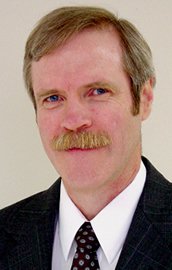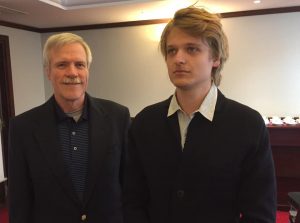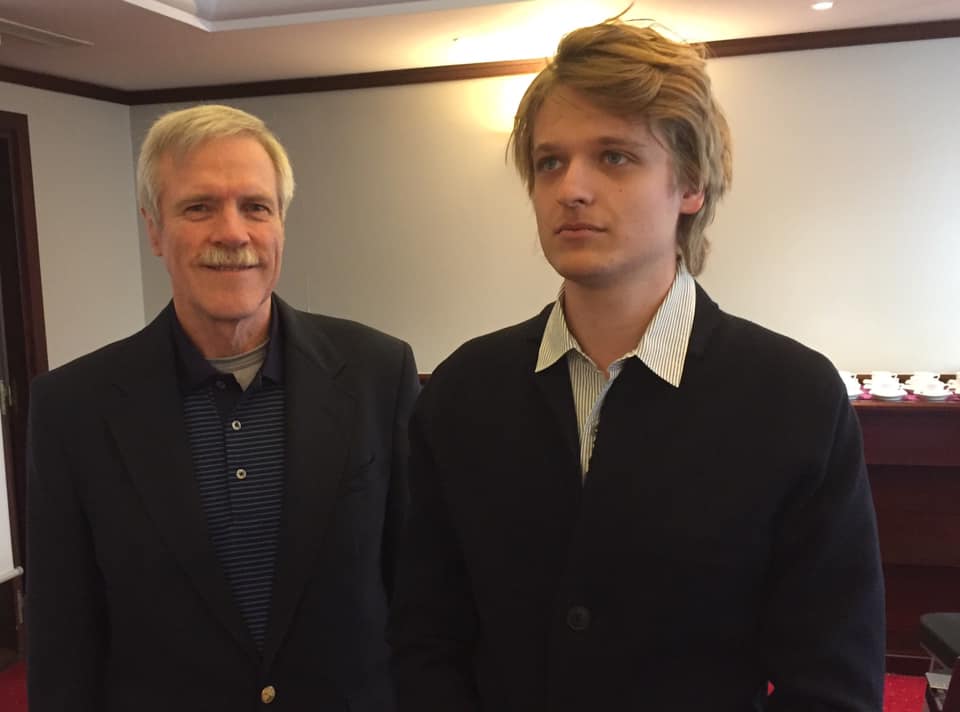 John Raymond Christy is a climate scientist at the University of Alabama in Huntsville (UAH) whose chief interests are satellite remote sensing of global climate and global climate change. In February 2019 he was named as a member of the EPA Science Advisory Board.
John Raymond Christy is a climate scientist at the University of Alabama in Huntsville (UAH) whose chief interests are satellite remote sensing of global climate and global climate change. In February 2019 he was named as a member of the EPA Science Advisory Board.
Grégoire Canlorbe: You have been at pains to show that climate models are over-predicting warming by roughly a factor of two. Could you come back to this alleged falsification?
John Christy: We should be applying the scientific method to claims scientists (and others) are making about the climate. In this case I downloaded the output from 102 climate model simulations used by the IPCC and compared the tropospheric temperature since 1979 between the models and several observational datasets, including the satellite dataset we generate. The models on average were warming the atmosphere at a rate significantly greater than the observations. This is a test result from which we can say the models failed, and thus one shouldn’t depend on model output to characterize the future climate.
Grégoire Canlorbe: You are notably known for your involvement—along with Roy Spencer—in devising the first successful satellite temperature record. It turns out that beforehand you had already built your “first climate datasets” at the age of twelve, “using a mechanical pencil, graph paper, and long-division (no calculators back then.)” Could you tell us more about this life of invention?
John Christy: I was fascinated with the weather conditions around my home in the San Joaquin Valley of California (a desert basically) and the contrast with the climate of the Sierra Nevada Mountains immediately to the East. I was curious as to why some years were wet, others dry… why the Sierras had more precipitation and why the snow levels varied so much. I was the first high school student in California to write a simple program to predict the weather and to calculate the snow level in the mountains. These were very crude, statistical models in 1968, written for computers that were far less sophisticated than today’s cell phone. But, they introduced me to computer coding and to the power that was required to study. That was over 50 years ago.
Grégoire Canlorbe: It is sometimes alleged that given the impossibility to obtain—from the study of averaged weather patterns over a given period—reliable predictions on the forthcoming atmospheric conditions, climatology is not a full-fledged science. At best, it would be an art mobilizing various scientific fields (such as physical geography, oceanography, and metrology); at worst, it would be a propaganda tool. Do you recognize some relevance to such criticisms?
John Christy: One of the fundamental characteristics of the scientific method is that if we understand a system, then we can predict the behavior of that system. Our work in which we compare “predictions” from climate models against the actual changes of the real world indicate the current understanding of climate change is rather poor. This understanding is certainly not mature enough for regulatory policy. That certain experts and elites refuse to see the level of immaturity of understanding regarding climate, is astonishing.
However, it is understandable since climate is such a complex system, it is easier and more comforting for these elites to simply ignore the complexity and declare they believe CO2 is dangerous and we should believe them because of some status of authority they have garnered for themselves. They claim the “Science is Settled” only because they have not performed the necessary scientific tests which I believe would lead them to the opposite conclusion.
 John Christy (on the left) in the company of Grégoire Canlorbe
John Christy (on the left) in the company of Grégoire Canlorbe
– Paris, May 2019
Grégoire Canlorbe: Concerning the climate-realist argument that CO2 is the food for plants, it is commonly answered that any good thing in excess—including CO2—becomes a poison; and that CO2 levels continuing to rise would only be beneficial to those of plants sheltered in highly controlled greenhouses.
While the increase in temperature (following the increase in CO2) engenders an increase in the size of deserts, the larger growth—as well as the greater moisture evaporation—of CO2 enhanced plants heightens their need for water; as a general rule, too high a supply in CO2 leads to a reduced availability of other nutrients—and, in the case of certain plants, can also trigger a reduction of photosynthesis or a greater vulnerability to insects. How do you assess this analysis?
John Christy: The evidence from satellite observations is very clear that the Earth has experienced considerable “greening” over the past 20 years, so this indicates that the extra CO2 we have put back into the atmosphere is having a very positive impact on the biosphere. It should be noted that most of the living things around us developed in an atmosphere millions of years ago that contained four to ten times more CO2 than we have at the present.
So, deserts are not increasing, but contracting. This is where the scientific method is so important—when someone makes a claim about a change in the climate or Earth system, others should test that claim with real observations. Unfortunately today, the media often would rather announce the dramatic claim of a terrible change without checking the facts.
Grégoire Canlorbe: In response to showing that climate is barely sensitive to CO2, it is not uncommon to assert that it remains impossible for fossil fuel industry, mechanized agriculture, and mass urbanization not to have disturbed the natural course of climate in one way or another. To what extent do you reject this claim?
John Christy: I think the natural course of the climate has been changed, especially in urban areas where the natural surroundings have been drastically altered. Temperatures are warmer (especially at night) in these urban areas. Globally, the climate impact of the extra CO2, I believe, is actually smaller than the urban warming signal in our big cities. It should be noted that the people of the world are moving toward modernization and that is accomplished by affordable energy—which today comes from the burning of carbon-based fuels. In the future, other sources of energy that are affordable will be deployed and this alleged problem of “climate change” will fade away.
It is important to note that we did not leave the Stone Age because we ran out of stones. We left the Stone Age because something better was discovered by human ingenuity. We will leave the Carbon Age not because we run out of carbon, but because a different and more affordable source of energy will be developed. As of now, the traditional renewables aren’t the answer because they supply such little energy relative to the area they cover, and they are unable to supply energy “on-demand” as is required for a modern economy.
Grégoire Canlorbe: The recent Notre-Dame de Paris fire has been occasionally qualified as a consequence of global warming. In other existing interpretations, the burning is thought to be God’s punishment against the Roman Catholic Church—by reason of its alleged crypto-Paganism which would be culminating into the ecologism of Pope Francis and his endorsing the belief in anthropogenic warming. As a former missionary, how do you react to this demonization of the Catholic Church?
John Christy: I do not think such interpretations are useful. I would only say that, in general, the Christian faith upholds the value of human life so that actions that enhance the length and quality of human life is the moral imperative. At this point in time, the use of carbon-based energy provides exactly what is needed here—the energy needed to lengthen and enhance the quality of human life. Without energy, life is brutal and short as I learned while serving as a teacher/missionary in Africa.
Grégoire Canlorbe: The purported neoconservative turn of Donald Trump’s foreign policy does not fail to arouse controversy. When it comes to assessing retrospectively the neoconservative movement, its positive deeds and its mistakes, do you think figures like George W. Bush, Paul Wolfowitz, William Kristol, or John Bolton have been fighting against eco-fanaticism as vehemently as they have been combating the threat of Marxism or that of Islam?
John Christy: I do not think about this issue too much. I would say that one should look at the final piece of data—the world is increasing its carbon emissions as it works to eradicate poverty. So, while the world has been scolded for 25 years by elites from scientific, academic and liberal government entities, nothing has really changed. People will pursue what is in their own best interest—long, healthy and fulfilling lives—and affordable energy makes that happen.
Grégoire Canlorbe: It has been hypothesized that changes in incoming solar radiation—over several decades—are the main factor causing or, at least, modulating climatic variations. Could you share your thoughts on this alleged connection between the Sun and climate?
John Christy: I’ve looked at this issue and we do see the impact of solar variability on our stratospheric temperature data. However, in the troposphere (where we live) the evidence is very difficult to draw out because our dataset is only 40 years long and other major perturbations have confused the ability to detect an 11-year cycle (i.e. volcanic eruptions, El Niños etc.) There certainly must be a relationship between solar variability and climate, and I am watching with interest the work of those who study the cosmic-ray connection which is directly related to solar variations. Perhaps even greater evidence will be coming soon in this area.
Grégoire Canlorbe: It is not uncommon—in some Christian circles—to conceive of the Darwinian theory of evolution as a state-sponsored hoax comparable to man-caused global warming. Both would be pseudo-scientific perspectives denying the divine character of man and the presence of Providence in the universe—and leading to idolize the state. As a Protestant scientist, how do you assess this opinion?
John Christy: This is an interesting question. Please note that a scientist using the scientific method should generate a reproduceable result whether he/she is a Baptist (like me), a Buddhist or a Baha’i. The scientific issues about climate are based on measurements we make to test claims, not on an opinion one might have. When it comes to policy that directly affects people, especially the poor, we now must consider non-scientific issues such as: is it proper to inflict hardship on those who can least afford it by following policies that demonstrably will not impact the climate?
It is not in our best interest to appeal to religious feelings when dealing with issues that are available for scientific testing. As the average person knows, there are a multitude of religious opinions today, but a scientific test should have results to which all rational people, religious or not, should be able to acknowledge.
I also think the average person has considerable experience regarding the claims about a dangerous future from so-called experts which the average person knows are simply exaggerations. And, the average person knows that these experts want to pass rules that take away a part of life that the average person wants and needs. Recent elections around the world demonstrate that the average person recognizes these false claims of calamity and wants to get on with their lives without the burden of higher taxes and fees which, in fact, will not impact the climate anyway (as we have shown with scientific tests). The average person is smarter than the experts and elites suspect.
Grégoire Canlorbe: Thank you for your time. Is there something you would like to add?
John Christy: No. Thank you for interviewing me.
That conversation was conducted (in May 2019) on behalf of the Association des climato-réalistes, the only climate-realist association in France. It was first published in an edited version in the French journal Valeurs Actuelles – and in English on Friends of Science, in June 2019.
